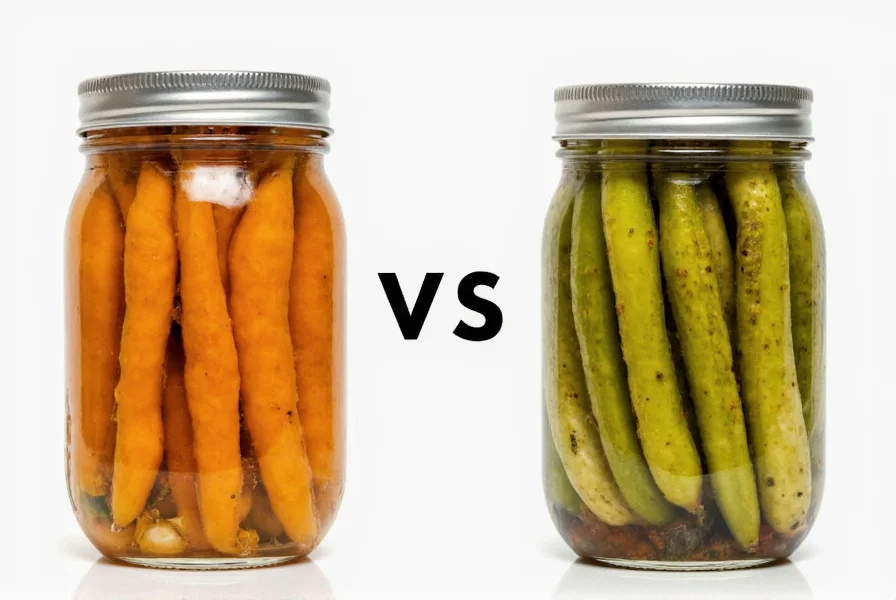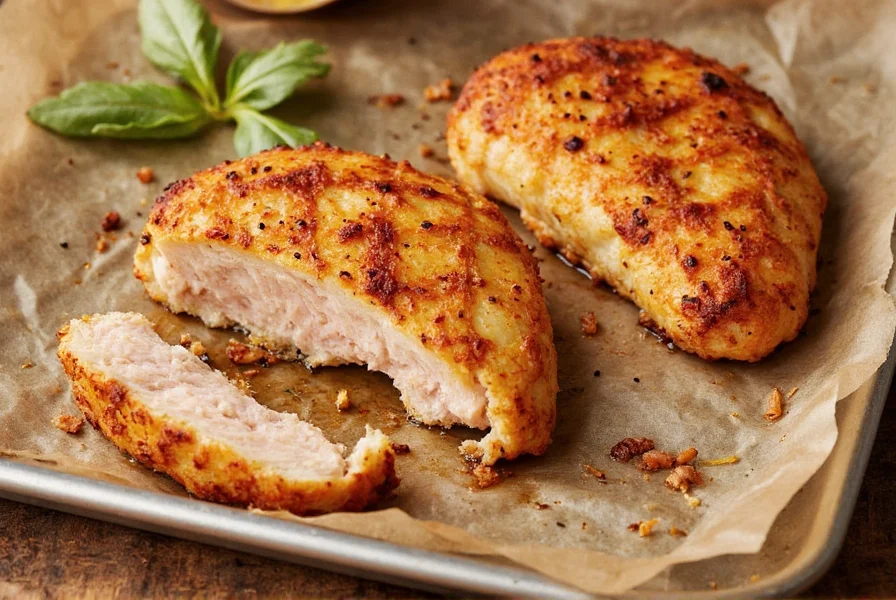The main difference between pickling and fermenting is that pickling uses vinegar or another acid solution for immediate preservation, while fermenting relies on natural bacteria to create lactic acid over time. Pickling gives you quick, tangy results in hours or days, while fermentation develops complex flavors and probiotics over weeks. If you've ever wondered 'is fermented food the same as pickled' or 'can you pickle without vinegar,' this guide will clarify everything you need to know about these two essential food preservation techniques.
Table of Contents
- Introduction to Pickling & Fermenting
- The Art of Pickling
- The Science of Fermenting
- Pickling vs Fermenting: Side-by-Side Comparison
- Taste Test: What You Can Expect
- Health Perks: Gut Love & Beyond
- Spice Hacks for Pickling & Fermenting
- Frequently Asked Questions
- Buying Guide: Best Tools & Ingredients
- Conclusion: Which One Should You Choose?
Understanding Pickling & Fermenting Fundamentals
If you're searching for 'pickling vs fermenting,' you likely want a clear breakdown of how these processes differ. While both preserve food and add tangy flavors, they work through completely different mechanisms. The confusion is understandable—many products are labeled as 'pickled' when they're actually fermented (like traditional sauerkraut), and vice versa.
Pickling achieves preservation through external acidity (usually vinegar), creating immediate results with minimal bacterial activity. Fermentation, however, harnesses natural microbes to transform food over time, creating lactic acid as a byproduct. This distinction affects everything from flavor profiles to health benefits and shelf life.
Understanding these differences is crucial whether you're a home cook experimenting with preservation methods or someone researching 'are fermented pickles healthy' for dietary reasons. Let's explore each method in detail.
The Art of Pickling
Pickling is a preservation method where food (usually vegetables) is submerged in an acidic solution—most commonly vinegar. This process creates an environment where harmful bacteria cannot survive, effectively preserving the food.
How Does Pickling Work?
- Vinegar: Most modern pickling uses vinegar as the main acid to inhibit bacterial growth. The acidity level (typically 5% acetic acid) is critical for food safety.
- Brining: Some pickles start with a salt brine before vinegar is added, which helps maintain crispness.
- Heat Pasteurization: Many store-bought pickles are heat-sealed, making them shelf-stable for months. This process kills any remaining bacteria but also destroys probiotics.
- Spice Infusion: The vinegar solution readily absorbs flavors from garlic, dill, mustard seeds, peppercorns, and chili peppers, creating complex taste profiles.
The Science of Fermenting

Fermenting is a natural process where beneficial bacteria (primarily Lactobacillus) break down sugars and starches in food, producing lactic acid as a byproduct. This acid acts as a natural preservative and gives fermented foods their distinctive sour taste.
How Does Fermentation Work?
- No Vinegar Needed: Fermented foods rely solely on salt and time—not vinegar—to develop their tang through natural bacterial action.
- Natural Microbes: The bacteria naturally present on fresh produce or introduced via starter cultures do all the heavy lifting.
- Probiotic Powerhouse: Properly fermented foods contain live cultures that support gut health and digestion.
- Slow Process: This method typically takes 7-21 days at room temperature, with flavors continuing to develop over months in refrigeration.
Pickling vs Fermenting: Side-by-Side Comparison
| Feature | Pickling | Fermenting |
|---|---|---|
| Base Liquid | Vinegar-based brine (acetic acid) | Saltwater brine (creates lactic acid) |
| Time Required | Minutes to hours for quick pickles; up to a few weeks for depth | Minimum 7 days; optimal flavor develops over 3-6 weeks |
| Bacterial Action | No live cultures (vinegar kills bacteria) | Yes—relies on probiotic bacteria (Lactobacillus) |
| Flavor Development | Immediate sharpness; flavors don't evolve after processing | Flavors continue developing and becoming more complex over time |
| Shelf Life | 1-2 years unopened; 2-3 months refrigerated after opening | 6-12 months refrigerated; flavor continues evolving |
| Nutritional Benefits | Preserves nutrients; no probiotics unless unpasteurized | Increases bioavailability of nutrients; rich in probiotics |
| Food Safety | Acidity prevents bacterial growth; generally very safe | Risk of contamination if not done properly; requires attention to process |
| Best For | Immediate results; consistent flavor; quick preservation | Gut health; complex flavors; traditional food preservation |
Taste Test: What You Can Expect
The flavor differences between pickled and fermented foods answer the common question 'why does fermented food taste different than pickled.' Understanding these distinctions helps you choose the right method for your culinary goals.
Pickling Tastes Like…
- Immediate, consistent tartness from vinegar
- Clean, bright acidity that doesn't evolve over time
- Distinct spice notes that remain relatively constant
- Ideal for dishes where you want a specific, unchanging tang
Fermenting Tastes Like…
- Complex sourness that develops and deepens over time
- Earthy, umami-rich undertones from bacterial activity
- Flavor evolution—what tastes mildly sour at 7 days becomes deeply complex at 21 days
- Nuanced spice integration where flavors meld together
Health Perks: Gut Love & Beyond
When researching 'is fermented food better than pickled,' health considerations often drive the decision. Let's examine the evidence-based benefits of each method.
Health Benefits of Pickling
- Preserves nutrients better than cooking methods like boiling
- Reduces need for added salt in dishes through flavorful alternatives
- Contains vinegar benefits (potential blood sugar regulation)
- Safe for those with sensitive digestive systems who can't tolerate probiotics
Health Benefits of Fermenting
- Rich in diverse probiotics that support gut microbiome diversity
- Increases bioavailability of nutrients like vitamins K and B
- May improve immune function (70% of immune system resides in gut)
- Creates beneficial enzymes that aid digestion
- Emerging research suggests potential mental health benefits via gut-brain axis
Spice Hacks for Pickling & Fermenting
Spice integration differs significantly between methods—a key consideration when deciding 'should I pickle or ferment my vegetables.' These techniques maximize flavor in each process.
Pickling Spice Hacks
- Dill + Garlic: A classic combo that creates immediate, vibrant flavors perfect for quick refrigerator pickles
- Red Pepper Flakes: Add controlled heat that infuses quickly in vinegar-based solutions
- Mustard Seeds & Turmeric: Release flavors rapidly in acidic environments for golden hue and subtle bitterness
- Jalapeños or Habaneros: Ideal for quick pickles where you want intense, immediate heat
- Citrus Zest: Adds brightness that remains consistent over time in vinegar solutions
Fermenting Spice Hacks
- Coriander Seeds: Mildly citrusy flavor that evolves beautifully during fermentation
- Caraway Seeds: Traditional for sauerkraut; develops deeper, more complex notes over weeks
- Fennel Seeds: Earthy aroma that mellows and integrates perfectly with slow fermentation
- Juniper Berries: Bold flavor that transforms during fermentation, adding complexity
- Chili Peppers: For ferments where heat gradually melds with sourness for balanced spiciness

Frequently Asked Questions
What's the main difference between pickling and fermenting?
Pickling uses vinegar as the primary acid to preserve food, creating an immediate tangy flavor. Fermenting relies on natural bacteria to convert sugars into lactic acid over time, creating probiotics and more complex flavors.
Are fermented foods always sour?
While fermentation produces lactic acid which creates a sour taste, the level of sourness varies based on fermentation time and ingredients. Shorter ferments are milder, while longer ferments develop more pronounced tanginess along with complex umami notes.
Can you pickle without vinegar?
Traditional quick pickling requires vinegar for its acidity, but you can create 'quick fermented' pickles using salt brine for a shorter period (3-7 days). True pickling without any acid component isn't safe for preservation.
Do fermented foods need refrigeration?
Yes, once your fermentation has reached your desired flavor, refrigeration slows down the process significantly. While some fermented foods can be canned for room temperature storage, this kills the probiotics. For maximum health benefits, keep fermented foods refrigerated.
Why do my fermented vegetables sometimes become soft?
This usually happens when using too much salt, fermenting at too warm temperatures, or using vegetables that aren't fresh. Adding tannin-rich ingredients like grape leaves or black tea can help maintain crunch in fermented vegetables.
Can I add sugar to my pickling or fermenting recipes?
In pickling, a small amount of sugar balances acidity. In fermenting, sugar is generally unnecessary as vegetables contain natural sugars for bacteria to consume. Adding sugar to ferments can encourage unwanted bacteria growth and affect texture.
How do I know if my ferment has gone bad?
Healthy ferments have a pleasant sour smell. Warning signs include: mold on the surface (not just kahm yeast), putrid or rotten odors, slimy texture, or unusual colors. When in doubt, throw it out - properly fermented food should never smell unpleasant.
Can I use iodized salt for pickling and fermenting?
Iodized salt contains additives that can cloud pickling liquid and inhibit bacterial growth in ferments. Always use non-iodized, additive-free salt like pickling salt, sea salt, or kosher salt for best results in both processes.
Buying Guide: Best Tools & Ingredients
Whether you're making quick refrigerator pickles or starting your first batch of kimchi, having the right tools makes all the difference. Here's our top-rated gear and ingredients for achieving perfect results every time.
Essential Pickling Tools
- Mason Jars: Reusable, easy to seal, and perfect for small batches. Look for wide-mouth versions for easier packing.
- Pickling Spices: Pre-mixed or custom blends designed specifically for vinegar-based solutions.
- Non-Reactive Pots: Stainless steel or enamel-coated pots prevent metallic flavors in your brine.
- Refrigerator Pickle Kits: Great for beginners with precise measurements and instructions.
- Quality Vinegars: Apple cider (milder), white wine (delicate), or rice vinegar (subtle) for nuanced flavors.
Top Fermenting Essentials
- Fermentation Crock: Traditional ceramic vessels with water-seal lids maintain optimal anaerobic conditions.
- Airlock Systems: Allows CO2 to escape while preventing oxygen entry, crucial for successful fermentation.
- Weights & Lids: Keeps vegetables submerged below the brine line where harmful bacteria can't thrive.
- Starter Cultures: For consistent results, especially with vegetables low in natural sugars.
- Unrefined Sea Salt: Essential for fermentation—avoid iodized salt which inhibits bacteria growth.
Conclusion: Which One Should You Choose?
After exploring the critical differences between these methods, the choice ultimately depends on your specific goals and circumstances.
Choose pickling when:
- You need immediate results for an upcoming meal or event
- You prefer consistent, predictable flavors that won't change over time
- You're creating gifts that require long shelf stability without refrigeration
- You're addressing the question 'how to pickle vegetables quickly for beginners'
Choose fermenting when:
- You prioritize gut health and probiotic benefits
- You enjoy watching flavors evolve and deepen over weeks
- You're interested in traditional food preservation methods
- You're researching 'are fermented pickles healthy for gut'
Many experienced food preservers use both methods strategically—you might quick-pickle cucumbers for immediate use while fermenting cabbage for future kimchi. Understanding the science behind each process empowers you to make informed decisions that match your culinary and health goals.
Whether you're searching for 'pickling vs fermentation for beginners' or advanced techniques, starting with the right method makes all the difference in your preservation journey. Now armed with this knowledge, you're ready to create perfectly preserved, flavorful foods that meet your specific needs.










 浙公网安备
33010002000092号
浙公网安备
33010002000092号 浙B2-20120091-4
浙B2-20120091-4